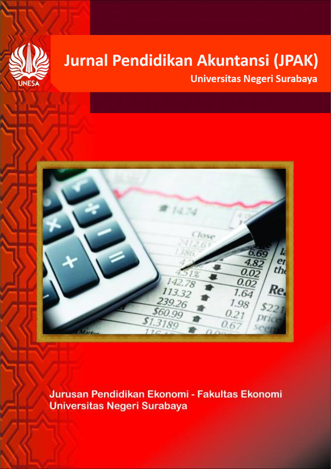Pengembangan Perangkat Pembelajaran Berbasis Problem Based Learning (PBL) untuk Meningkatkan Higher Order Thinking Skill (HOTS)
DOI:
https://doi.org/10.26740/jpak.v9n2.p292-301Keywords:
Higher Order Thinking Skills; problem based learning; 4D modelAbstract
The aim of this research is to produce a PBL learning tool that can be used to improve HOTS in Accounting Learning Strategy courses in terms of experts, practitioners, and students. This research was a research development. The development process uses the stages of the 4D development model. The data analysis technique is descriptive analysis. The learning device which includes RPP and LKM. Data analysis was conducted to determine the feasibility of the learning device developed by converting the trial data on a five scale. The results of this research are (1) development of learning tools in the form of Learning Implementation Plans and Student Activity Sheets to improve HOTS, on the use of PBL models. The learning device trial was carried out on students participating in the Accounting Learning Strategy course. Before being tested, the learning tool has gone through a revision stage from an expert lecturer and is declared very feasible to be used in learning. (2) Feasibility or quality of learning devices in the form of Learning Implementation Plans and Student Worksheets in terms of various aspects of assessment are categorized as very feasible. (3) Based on the results of student responses to the use of worksheets on the application of PBL to increase HOTS, all aspects of assessment get a score in the very decent category.
Downloads
Downloads
Published
How to Cite
Issue
Section
License
Authors who publish with this journal agree to the following terms:
- Authors retain copyright and grant the journal right of first publication with the work simultaneously licensed under a Creative Commons Attribution License that allows others to share the work with an acknowledgement of the work's authorship and initial publication in this journal.
- Authors are able to enter into separate, additional contractual arrangements for the non-exclusive distribution of the journal's published version of the work (e.g., post it to an institutional repository or publish it in a book), with an acknowledgement of its initial publication in this journal.
- Authors are permitted and encouraged to post their work online (e.g., in institutional repositories or on their website) prior to and during the submission process, as it can lead to productive exchanges, as well as earlier and greater citation of published work (See The Effect of Open Access).

Jurnal Pendidikan Akuntansi (JPAK) is licensed under a Creative Commons Attribution-NonCommercial 4.0 International License.
 Abstract views: 1726
,
Abstract views: 1726
, PDF Downloads: 1536
PDF Downloads: 1536



